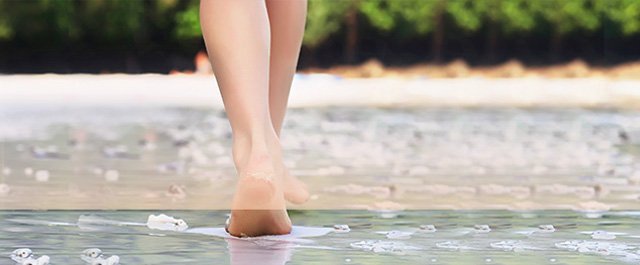Foot & Ankle Reconstruction
Foot reconstruction is a surgery performed to correct the structures of the foot and restore the natural functionality of the foot that has been lost due to injury or illness.
The foot is formed by several bones, ligaments, joints and muscles, which function collectively to control various movements such as walking and running. The feet are susceptible to various mistreatments in the form of ill-fitting shoes, sports injuries, work-related trauma, or the strain of walking. Various outside forces tend to harm the feet and cause pain and discomfort.
Indications for foot reconstruction:
A variety of reconstructive procedures are designed to treat many foot disorders and restore your foot back to its original health and function. Following are the indications:
- Common foot ailments such as bunions or hammertoes
- Birth defects such as club feet
- Postural deformity such as severe flat feet
- Fractures sustained as a result of accident/trauma
- Athletic injuries such as Achilles tendon tears, foot/ankle fractures, ligament injuries and several others
- Plantar fasciitis, a common cause of heel pain
- Heel and bone spurs
- Joint or bone deformities due to arthritis
- Infections
- Tumours and lesions
- Foot problems with metabolic diseases such as diabetes
Foot reconstruction surgery:
The primary objectives of foot reconstruction are reduction of pain and restoration of function and appearance. The surgery to be performed depends on several factors such as age, type of foot disorder, and severity and duration of the symptoms. It is often recommended when conservative treatments fail to resolve the symptoms and is a good choice in permanently treating various foot disorders.
With the new advancements in surgical technology, the traditional method of treating foot disorders is replaced by a minimally invasive technique (arthroscopy) which can most often be performed on an outpatient basis.
This procedure is usually performed under general anaesthesia. Several tiny incisions are made by your surgeon to insert an arthroscope and miniature surgical instruments into the joint. The camera attached to the arthroscope displays the internal structures on a monitor and your surgeon uses these pictures to evaluate the joint and direct the small surgical instruments either to repair or remove the damaged bone or tendon depending upon the extent of injury.
At the end of the procedure, the surgical incisions are closed by sutures or protected with skin tapes and a soft dressing pad is applied. Depending upon the surgery, your surgeon will place a cast or a splint to prevent movement of the foot until healing occurs and it regains normal functioning capacity.
Some of the advantages of arthroscopic surgery include:
- Minimal trauma to the surrounding structures
- Shorter recovery time with less post-surgical complications
- Greater range of motion with less post-operative pain
- Usually performed as an outpatient day surgery
Post-operative care:
Following are the post-surgical guidelines to be followed after reconstruction:
- Make sure you get adequate rest. Avoid using the affected foot for a few weeks.
- Take medications to help alleviate pain and inflammation as prescribed by your doctor.
- Apply ice bags over a towel to the affected area for about 15-20 minutes to reduce post-operative pain and swelling.
- Compression dressings (bandage) should be worn to support the foot and reduce swelling.
- Keep the foot elevated at or above the level of your heart. This helps minimize swelling and discomfort.
- Crutches or a walker may be used to maintain balance or stability while walking.
- Start rehabilitation (physical therapy) as recommended by your surgeon to improve range of motion. You should begin appropriate exercises to stretch and strengthen the muscles in your feet.
- Return to sports once the foot has regained normal strength and function with your surgeon's approval.
The outcome of foot reconstruction surgery is greatly improved when you, your surgeon, and the physical therapist work together as a team.

 Menu
Menu



